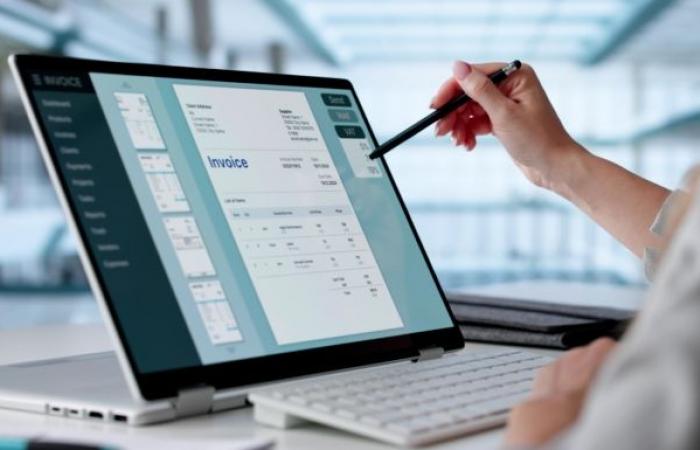Electronic billing via Peppol will be compulsory in Belgium from January 1, 2026. Companies consider this obligation as an opportunity to optimize their digital workflow in billing.
Do you head a Belgian company subject to VAT? In this case, the compulsory electronic billing via Peppol is probably familiar to you. This new legislation stipulates that all Belgian companies subject to VAT will have to use electronic invoices from January 1, 2026. The obligation has already been in force since 2024 for public procurement (B2G). The basis of these structured invoices is Peppol (Pan-European Public Procurement Online), a European organization whose headquarters are in Belgium.
In Belgium, most companies seem to be on track to comply with this new obligation. Our country has indeed fixed the deadline for January 1, 2026. It is early compared to other European countries, but this gives us a considerable step ahead of European regulations which will come into force in 2030.
We have with Philippe Kimpe, product manager at Lucy, and Roel Verbeeck, founder and CEO of Dokapi, specializing in the processing of financial documents based on AI and certified PEPPOL access point. What this implies exactly will be clarified in this article.
Beyond the preparation
From January 1, 2026, all Belgian companies subject to VAT will have to send and receive invoices via the PEPPOL electronic billing system. From 2030, this will also apply to international billing. “This is an advantage that our government imposed it in 2026. This gives us four years to adopt the regulations,” explains Kimpe. In many other European countries, this obligation is not yet on the agenda, which gives Belgium a considerable step ahead.
The information phase is clearly behind us: companies know what they must do and now take concrete measures.
Roel Verbeeck, founder and CEO of Dokapi
And this Belgian adoption seems to start quickly. “The latest figures show that a fifth of Belgian companies are already connected to Peppol. It is a clear sign that companies are no longer in an exploratory phase, but that they really take measures to comply, “says Verbeeck.
Cost reduction
“It is proven that PEPPOL saves long -term costs, whether when passing the paper versions or PDF invoices for electronic billing. “Kimpe explains:” All invoices will have the same format and will be delivered in the same mailbox. It is no longer de facto that invoices are lost. This means that the entire flow to the accountant represents an economy. »»
In addition, in Belgium, we are faced with what is called VAT gap. This is the difference between expected and effective VAT recipes. “The VAT deficit is estimated at 3.5 billion euros and mainly results from a combination of fraud and erroneous interpretation of VAT rules. Once this electronic invoicing will operate at full speed, the government will also be able to draw enormous advantages from it, “said Kimpe.
Simplicity embodied
During his career in different companies, Kimpe discovered that there was a need for simplicity in electronic invoicing. Peppol is the result of this simplicity. “We all registered one day on Facebook or LinkedIn, today it will be on Peppol. This recording flow is very simple, you only need your business number to register on the Peppol network. »»
The connection between your company and the Peppol network is established thanks to what is called a access point. It forms the link between your internal software system and the PEPPOL network. You can compare it to a post office that converts your documents to the right format, send them to the network and receive the documents from others.
Verbeeck also highlights the advantages and simplicity of the Peppol system. “We have seen a sharp increase in the number of implementations since the start of this year. So we are really in a phase where most companies understand what they should do and that can help them. »»
Process
Consequently, many companies consider this obligation as an opportunity to digitize their processes and optimize their workflow in billing. For software developers, this regulation creates an additional lever to help their customers accelerate their digitization route.
In the business market, the situation is somewhat more complex. “It is not only a requirement of conformity, but an intervention which must be deeply integrated into existing processes and workflows,” says Verbeeck.
However, he also receives positive signals in this area. “Companies that are already well advanced in their digital transformation often have a solid framework in which electronic invoicing can be integrated relatively easily. For them, this is a next logical step. For others, this requires a little more preparation, but there too, we do not feel structural resistance – rather a healthy vigilance. »»
Habitual creature
Although electronic invoicing via Peppol may seem of exemplary simplicity, its adoption will not take place so fluid in all companies. According to Kimpe, this is only a matter of habit. “Barely ten years ago, everyone was still giving their brown envelope containing their income tax return. Meanwhile, we have forgotten this and everyone uses tax on web. I expect the same scenario to happen with Peppol. »»








